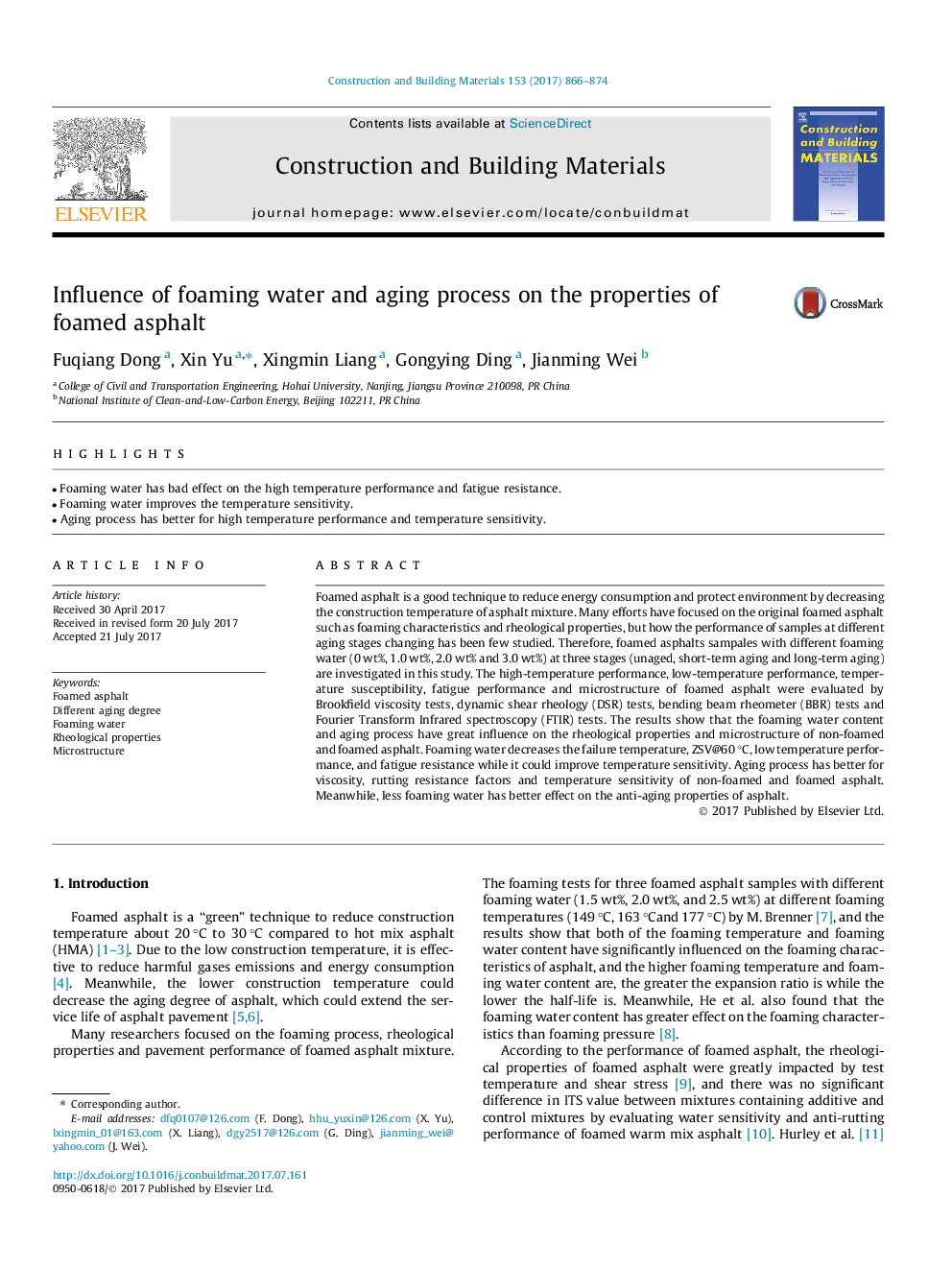| Article ID | Journal | Published Year | Pages | File Type |
|---|---|---|---|---|
| 4913029 | Construction and Building Materials | 2017 | 9 Pages |
Abstract
Foamed asphalt is a good technique to reduce energy consumption and protect environment by decreasing the construction temperature of asphalt mixture. Many efforts have focused on the original foamed asphalt such as foaming characteristics and rheological properties, but how the performance of samples at different aging stages changing has been few studied. Therefore, foamed asphalts sampales with different foaming water (0 wt%, 1.0 wt%, 2.0 wt% and 3.0 wt%) at three stages (unaged, short-term aging and long-term aging) are investigated in this study. The high-temperature performance, low-temperature performance, temperature susceptibility, fatigue performance and microstructure of foamed asphalt were evaluated by Brookfield viscosity tests, dynamic shear rheology (DSR) tests, bending beam rheometer (BBR) tests and Fourier Transform Infrared spectroscopy (FTIR) tests. The results show that the foaming water content and aging process have great influence on the rheological properties and microstructure of non-foamed and foamed asphalt. Foaming water decreases the failure temperature, ZSV@60 °C, low temperature performance, and fatigue resistance while it could improve temperature sensitivity. Aging process has better for viscosity, rutting resistance factors and temperature sensitivity of non-foamed and foamed asphalt. Meanwhile, less foaming water has better effect on the anti-aging properties of asphalt.
Related Topics
Physical Sciences and Engineering
Engineering
Civil and Structural Engineering
Authors
Fuqiang Dong, Xin Yu, Xingmin Liang, Gongying Ding, Jianming Wei,
